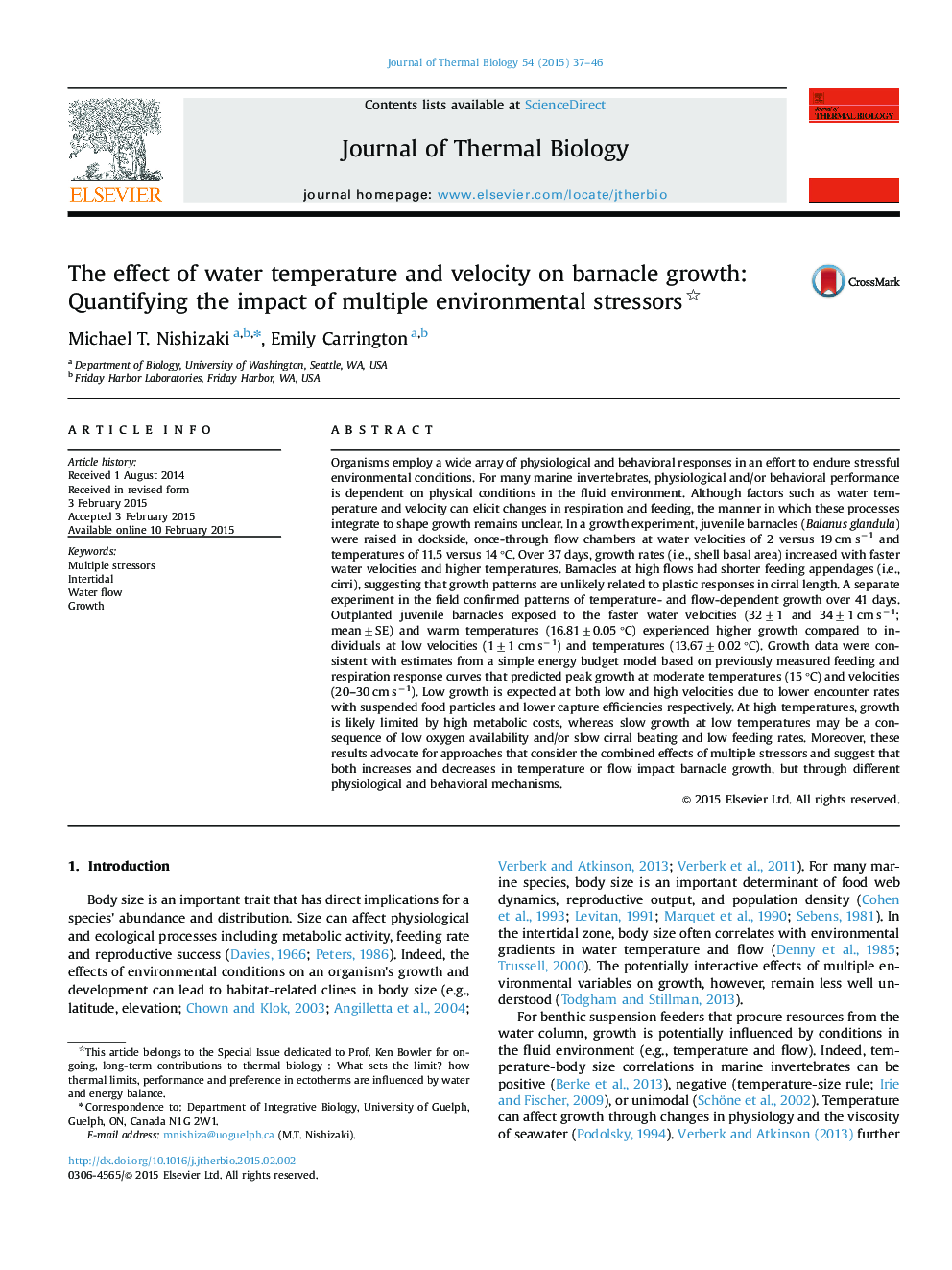| کد مقاله | کد نشریه | سال انتشار | مقاله انگلیسی | نسخه تمام متن |
|---|---|---|---|---|
| 2842703 | 1571092 | 2015 | 10 صفحه PDF | دانلود رایگان |
• We generate a barnacle growth model based on physiological and behavioral data.
• We predict barnacle growth over a range of water temperatures and velocities.
• We test the predictions with empirical measurements of growth in relation to temperature and flow.
• Growth was consistent with estimates from a simple energy budget model.
Organisms employ a wide array of physiological and behavioral responses in an effort to endure stressful environmental conditions. For many marine invertebrates, physiological and/or behavioral performance is dependent on physical conditions in the fluid environment. Although factors such as water temperature and velocity can elicit changes in respiration and feeding, the manner in which these processes integrate to shape growth remains unclear. In a growth experiment, juvenile barnacles (Balanus glandula) were raised in dockside, once-through flow chambers at water velocities of 2 versus 19 cm s−1 and temperatures of 11.5 versus 14 °C. Over 37 days, growth rates (i.e., shell basal area) increased with faster water velocities and higher temperatures. Barnacles at high flows had shorter feeding appendages (i.e., cirri), suggesting that growth patterns are unlikely related to plastic responses in cirral length. A separate experiment in the field confirmed patterns of temperature- and flow-dependent growth over 41 days. Outplanted juvenile barnacles exposed to the faster water velocities (32±1 and 34±1 cm s−1; mean±SE) and warm temperatures (16.81±0.05 °C) experienced higher growth compared to individuals at low velocities (1±1 cm s−1) and temperatures (13.67±0.02 °C). Growth data were consistent with estimates from a simple energy budget model based on previously measured feeding and respiration response curves that predicted peak growth at moderate temperatures (15 °C) and velocities (20–30 cm s−1). Low growth is expected at both low and high velocities due to lower encounter rates with suspended food particles and lower capture efficiencies respectively. At high temperatures, growth is likely limited by high metabolic costs, whereas slow growth at low temperatures may be a consequence of low oxygen availability and/or slow cirral beating and low feeding rates. Moreover, these results advocate for approaches that consider the combined effects of multiple stressors and suggest that both increases and decreases in temperature or flow impact barnacle growth, but through different physiological and behavioral mechanisms.
Journal: Journal of Thermal Biology - Volume 54, December 2015, Pages 37–46
